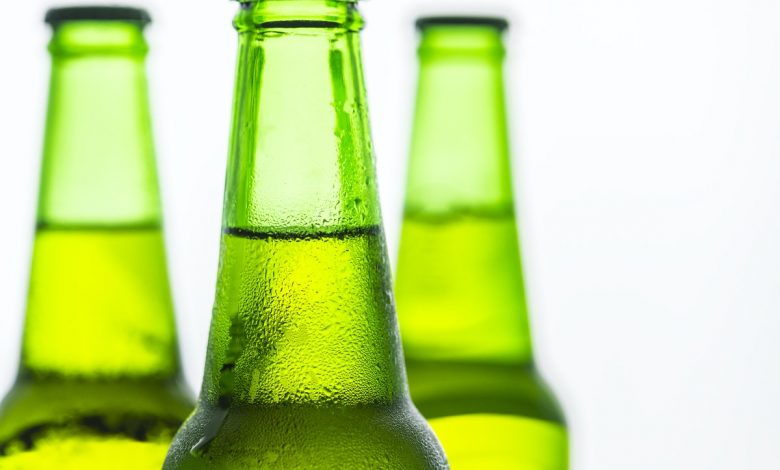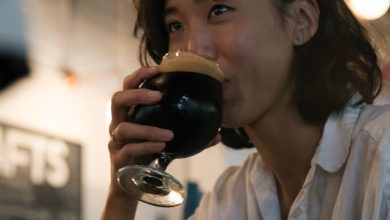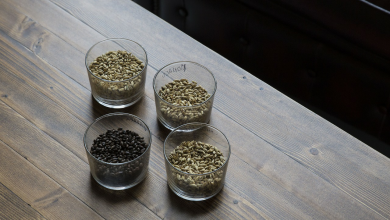What Is Malt Liquor? Malt Liquor vs. Beer

In the beer world, malt liquor tends to be a phrase often misunderstood by beer drinkers and advertised as more of a “party drink.” Why is this, you ask? Well, with malt liquor, it boils down a lot to the alcohol content.
Today, we’ll explore the history of malt liquor, what defines this unique beer style, and review some of the most popular brands in the category.
Defining Malt Liquor
Beer drinkers are often shocked to hear that malt liquor is a beer, the differences between traditional brews and malt liquor being starkly different. If you start with the basics, a higher alcohol content rests at the core of defining what malt liquor is. Most American beers average alcohol content of about five percent. At the same time, malt liquor typically holds between six and nine percent alcohol content.
The official Brewer’s Association description of American-style malt liquor describes the color and appearance of official malt liquors as a clear straw or gold color with a “chill haze.” It’s noted in the description that there are no flavor notes of hops usually present, but that there is a malty sweetness and practically no bitterness in taste. It’s also mentioned by the Brewer’s Association that “Fruity esters and complex alcohol aromas and ?avors are acceptable at low levels.
Malt liquor, also sometimes referred to as “high gravity” or “HG,” has a very different taste from other beers due to how it’s brewed. Malt liquor tends to be less hoppy and bitter in flavor than traditional beer due to the main ingredients being corn, sugar, barley, and other adjuncts.

History of Malt Liquor and How It’s Brewed
So how did malt liquor come to be? To explore the history of this beer type, we need to take it back to 1690 England; during this time, malt liquor was a term used to describe various different types of beer and ale. Then, in 1842 in Canada, a patent was issued to a person by the name of G.Riley for malt liquor. The patent stated that it was for “an improved method of brewing ale, beer, porter, and other maltliquors.”
Since the early mentions of malt liquor, the beverage has continued to make waves in the beer world. Malt liquor became especially popular in the U.S. following the end of Prohibition in the 1930s. Following the repeal of the restrictive liquor and alcohol ban, American beer brewers found themselves lacking the malt needed for beer. As a solution to this problem, beer makers introduced sugar into their brewing methods to help increase the alcohol content present. Following this time period, the U.S. has seen hundreds of different malt brands and varieties accumulate over the years.
As with any beer, the unique brewing process is what defines malt liquor for what it is. For malt liquor brewers, achieving a higher alcohol content drives how the beverage is brewed. The increased alcohol volume reached in the end is typically due to the corn, sugar, and various sugars used in the brewing process. Some brewers seek to further increase the alcohol content by introducing other enzymes into the brewing process to break down the malt that is present. Overall, bitterness is not a taste commonly found in malt liquor; instead, beer drinkers will usually find this type of beer to be dry and strong in alcohol taste. Many malt liquors are also combined with fruit and other flavors.
If you’ve ever heard the term “forties” referenced in songs, movies, TV, or advertising, it’s most likely talking about malt liquor. Malt liquor is usually sold in 40-ounce bottles or cans, thus the term “forties.”
Key Differences Between Malt Liquors and Traditional Beer
While beer and malt liquor are born of the same family, there are key differences that set them apart:
- The fermentation process used for traditional beer is different from malt liquor. Beer uses both the top fermentation process and the bottom fermentation process. In top fermentation, yeast rises to the top of the batch, while bottom fermentation allows yeast to sink to the bottom. Malt liquor does not use the top fermentation process, instead using only bottom fermentation.
- As mentioned before, malt liquor typically features a much higher alcohol content than beer does. Malt liquor usually carries between six and nine percent alcohol volume, while beer is five percent and under.
- Malt liquor has a sweeter, less hoppy, and bitter taste than beer. That being said, beer is typically smoother in taste and body than malt liquor is.
- Malt liquor tends to be cheaper than beer and often is sold in 40-ounce bottles. Beer more often is sold in 12-ounce bottles and can be priced higher depending on the brand.

Popular Malt Liquor Brands
Most likely, you’re already familiar with a number of brands that sell and manufacture malt liquor. Let’s take a look at some of the most popular:
Steel Reserve 211
Steel Reserve 211 is one of the most well-known malt liquors available. Also owned by the Miller Brewing Company, this malt liquor is available in seven different flavors: Spiked Punch, Spiked Strawberry Burst, Spiked Blue Razz, Spiked Tropic Storm, Hard Pineapple, Spiked Watermelon, and Blk Berry. Steel Reserve sits on the high end of alcohol content with eight percent alcohol volume.
Mickey’s
Initially made by Sterling Brewers Inc., Miller Brewing Company purchased Mickey’s Fine Malt Liquor in 1999. This malt liquor features a barely-there hop flavor, fruity aroma, low bitterness, and a full body.
Bud Light Lime-A-Rita
Budweiser pushes advertising campaigns on the Lime-A-Rita products pretty hard each year. Seven flavors make up the famous line of malt liquor that’s part of the Bud Light family: Lime-A-Rita, Straw-Ber-Rita, Water-Melon-Rita, Berry-A-Rita, Mang-O-Rita, Lemon-Ade-Rita, and Guava Rita. These popular Lime-A-Rita malt beverages are especially a hit during the hot summer months.
Zima
Zima initially launched in 1993 and took the U.S. by storm. Riding on the heels of other clear drink’s popularity, such as Crystal Pepsi, Zima made a name for itself with its refreshing lemon-lime flavor. At peak sales in 1994, Coors Brewing Company was selling 1.2 million barrels of the ultra-popular Zima malt liquor.
Colt 45
Baltimore Colt’s running back Jerry Hill, who wore the number 45 jersey, had the honor of having an extremely popular malt liquor named after him – Colt 45. Drinkers of this classic malt beverage enjoy it for the traditional beer taste that draws heavy inspiration from corn, various grains, and barley and presents it with a sugary sweetness.
Icehouse Edge
Icehouse Edge, described as a high gravity (HG) beer, is a well-known offering in the malt liquor industry. This malt liquor hedges more on having the traditional beer taste. Still, it features the higher alcohol content emphasized by malt liquors. Icehouse Edge is missing the bitterness present in conventional beers. Still, it lacks in an overt sweetness often present with malt liquors.
Smirnoff Ice
Interestingly, while Smirnoff Ice is a malt beverage here in the United States, it is vodka-based in other countries. Diageo, a British owned company, originating from Moscow, makes the popular Smirnoff Ice malt liquor. While there are various flavors of Smirnoff Ice, including Wild Grape and Mango, the original version features sweet citrus-inspired flavors.
Skyy Blue
Skyy Blue is a malt liquor beverage that offers a similar citrusy-sweet taste featured by Smirnoff Ice. Skyy Blue was famous in the ’90s and early 2000s, around the same time as Zima, but now is only sold in Mexico by the Campari Group.
Mike’s Hard Lemonade
Another well-known malt liquor, Mike’s Hard Lemonade, features an alcohol content on the lower end of the spectrum at five percent. Mike’s Hard Lemonade Co. started out with offering the original sweet lemonade flavor but has since branched out to include ten other fruit flavors: Black Cherry, Strawberry, Pineapple Mandarin, Mango, Cranberry, Peach, Raspberry, Lite Lemonade, Lite Black Cherry, Classic Margarita.
Hurricane
Anheuser-Busch’s malt liquor offering, Hurricane, features the higher eight percent alcohol content. But this beverage has a bit of a milder taste while also featuring some hops and fruit flavorings carried on a semi-sweet overall body of flavor. Hurricane was rolled out around the same time that Steel Reserve was released, with some considering it Anheuser-Busch’s answer to Miller Brewing Company’s popular malt beverage.
Old English 800
Some would say that Old English 800 is one of the more refined and better-tasting malt liquors. Old English 800 is owned by Miller Brewing Company but was first developed in 1964 by People’s Brewing Company. This popular malt beverage option offers a pretty smooth and balanced taste paired with a mild sweetness and malt flavorings.



